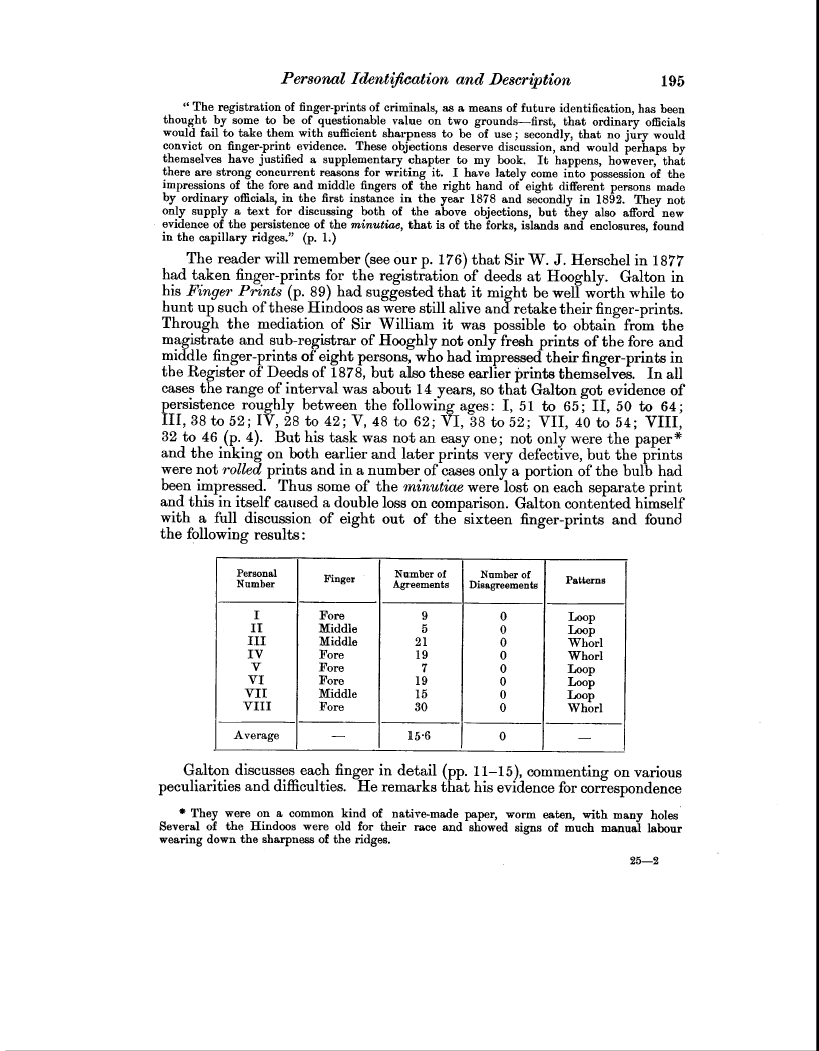| ||||||

OCR Rendition - approximate
Personal Identification and Description 195 " The registration of finger-prints of criminals, as a means of future identification, has been thought by some to be of questionable value on two grounds-first, that ordinary officials would fail to take them with sufficient sharpness to be of use ; secondly, that no jury would convict on finger-print evidence. These objections deserve discussion, and would perhaps by themselves have justified a supplementary chapter to my book. It happens, however, that there are strong concurrent reasons for writing it. I have lately come into possession of the impressions of the fore and middle fingers of the right hand of eight different persons made by ordinary officials, in the first instance in the year 1878 and secondly in 1892. They not only supply a text for discussing both of the above objections, but they also afford new evidence of the persistence of the minutiae, that is of the forks, islands and enclosures, found in the capillary ridges." (p. 1.) The reader will remember (see our p. 176) that Sir W. J. Herschel in 1877 had taken finger-prints for the registration of deeds at Hooghly. Galton in his Finger Prints (p. 89) had suggested that it might be well worth while to hunt up such of these Hindoos as were still alive and retake their finger-prints. Through the mediation of Sir William it was possible to obtain from the magistrate and sub-registrar of Hooghly not only fresh prints of the fore and middle finger-prints of eight persons, who had impressed their finger-prints in the Register of Deeds of 1878, but also these earlier prints themselves. In all cases the range of interval was about 14 years, so that Galton got evidence of persistence roughly between the following ages: I, 51 to 65; II, 50 to 64; 111, 38 to 52; IV, 28 to 42; V, 48 to 62; VI, 38 to 52; VII, 40 to 54; VIII, 32 to 46 (p. 4). But his task was not an easy one; not only were the paper* and the inking on both earlier and later prints very defective, but the prints were not rolled prints and in a number of cases only a portion of the bulb had been impressed. Thus some of the minutiae were lost on each separate print and this in itself caused a double loss on comparison. Galton contented himself with a full discussion of eight out of the sixteen finger-prints and found the following results
Galton discusses each finger in detail (pp. 11-15), commenting on various peculiarities and difficulties. He remarks that his evidence for correspondence * They were on a common kind of native-made paper, worm eaten, with many holes Several of the Hindoos were old for their race and showed signs of much manual labour wearing down the sharpness of the ridges. 25-2
|